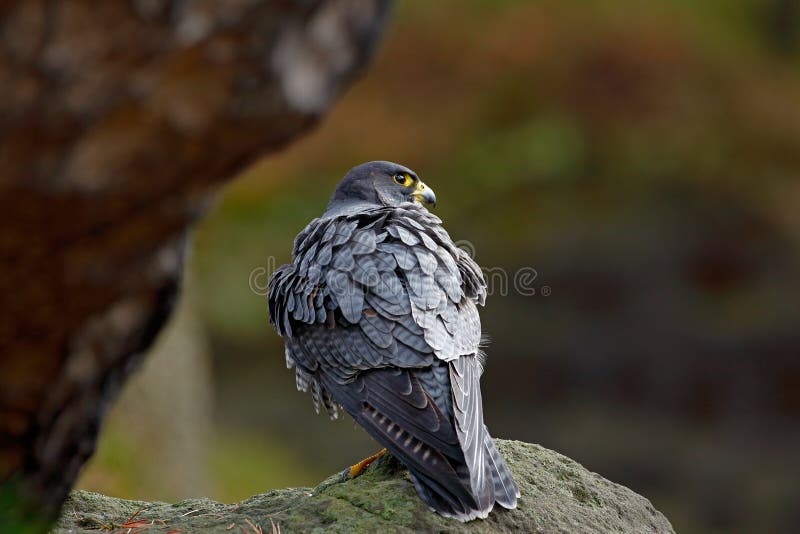

Bird Identification Learning to identify the birds you see and hear is a wonderful skill to have.All Birds Learn about birds, their identification, behavior, interesting facts and much more.Identification Search birds by color, habitat, body shape or size.Click here to visit this species' account and breeding-season distribution map in Sound to Sage, Seattle Audubon's on-line breeding bird atlas of Island, King, Kitsap, and Kittitas Counties. You can also find them on the Samish Flats, in Grays Harbor, around Sequim, all areas that support significant prey populations in winter. Peregrines are found in the major Puget Sound towns and cities (and their industrial waterfronts), including Centralia/Chehalis, Kelso/Longview, Vancouver, Tacoma, Seattle, and others. In winter, Peregrines can be found in the southwestern portion of Puget Sound (where Thurston and Mason Counties meet), in the Chehalis River valley, in all agricultural and urban areas from Olympia south to Vancouver, and any other similar lowlands in western Washington. Areas of the Cascades and other mountainous areas below about 4,000 feet, and essentially the length of the Columbia and Snake Rivers, as well as certain stretches of the Okanogan and Spokane Rivers, offer appropriate breeding habitat. Birds have been introduced in Skamania, Lewis, Spokane, Asotin, and Yakima Counties. There are few nesting records east of the Cascades, but a pair has nested in Klickitat County for several years, another on the Columbia River cliffs in Kittitas County, and still another on a bridge in Spokane. They are also nesting on the western slope of the Cascades, at Mt. In western Washington, Peregrine Falcons nest along the coast, in the San Juan Islands, in Puget Sound, and even in downtown Seattle and Tacoma. The range of the Peregrine Falcon appears to be changing rapidly as new breeding locations are found every year. It was extirpated from the state but has been reintroduced in a number of locations and seems to be recovering. The Continental Peregrine Falcon, or Anatum Peregrine, inhabits eastern Washington.

Peale's Peregrine Falcon is found along the coast and in Puget Sound. As a result of this recovery, the federal government has down-listed them from Endangered to Sensitive. The population is still small and is highly vulnerable to disturbance and environmental contaminants, but productivity levels are high and the population continues to increase. Peregrine Falcons can now be found in most parts of the state where there are cliffs or structures for nesting and sufficient prey. In 2000, 56 pairs were counted, doubling the number counted just seven years prior. In Washington, Peregrine Falcons reached a low of four pairs in 1980. They are considered a species of special concern by the US Fish and Wildlife Department, and are listed as an at-risk species by the Washington Gap Analysis. With the ban of DDT in the United States, the falcons have begun to recover, but have required reintroduction in many areas to regain a foothold where they had disappeared. Peregrine Falcons were severely endangered (and actually extirpated from eastern North America) in the mid-20th Century, mostly due to the pesticide DDT, which softens eggshells and results in widespread nest failure. In Washington, one species from this family belongs to the caracara group, while the others are true falcons. Extended parental care is the norm for this family, as it takes a relatively long time for the young to learn to hunt. Once the young no longer need to be brooded, both parents bring food. The female generally incubates the eggs and broods the young, while the male brings food to the nest. Some caracaras build stick nests in trees, but most species in this family nest on cliffs, in other birds' nests, or in cavities, and typically do not add any nesting material. They are generally monogamous and form long-term pair bonds. Like other birds of prey, females are larger than males. Regardless of the approach, members of this family almost always use their feet to catch prey. Members of the caracara group are more opportunistic, taking carrion as well as live prey and often foraging on the ground. Many catch avian prey in flight, but others prey on large insects, mammals, and ground-dwelling birds. Built for speed, most falcons have pointed wings and long tails. Some of the fastest-flying birds can be found in the falcon group. This widespread and diverse family of predatory birds is divided into two groups.


 0 kommentar(er)
0 kommentar(er)
